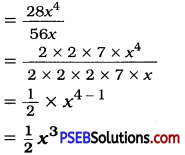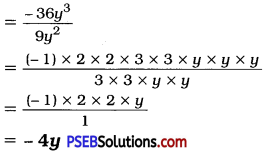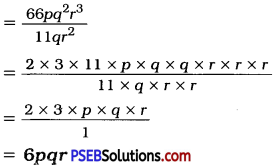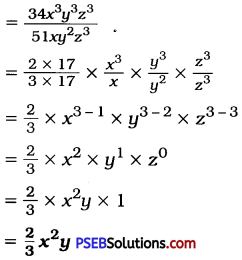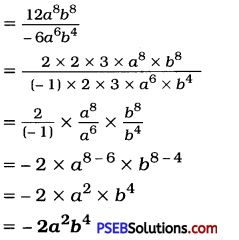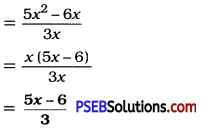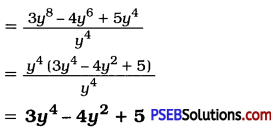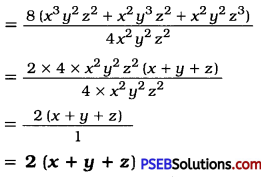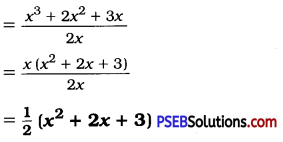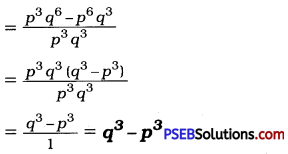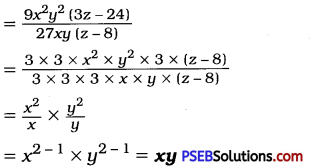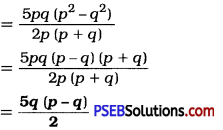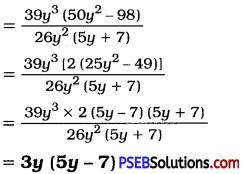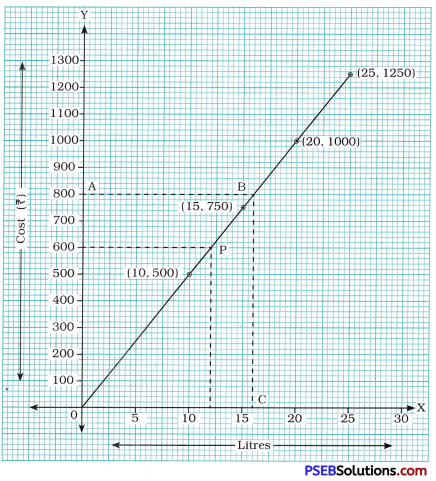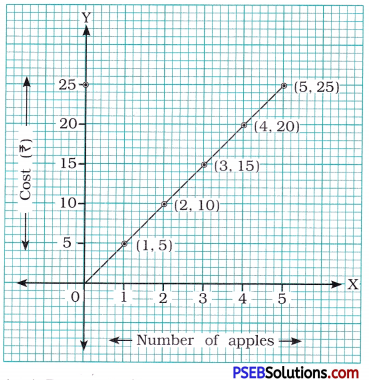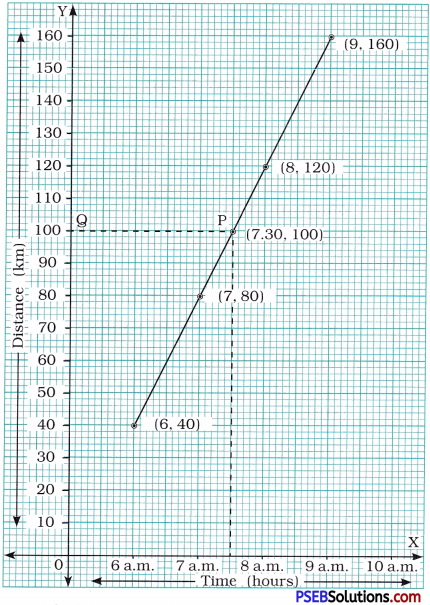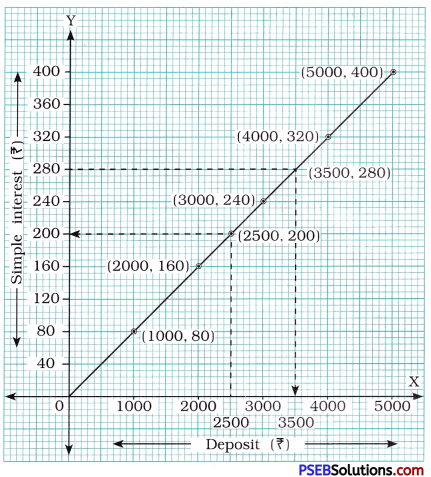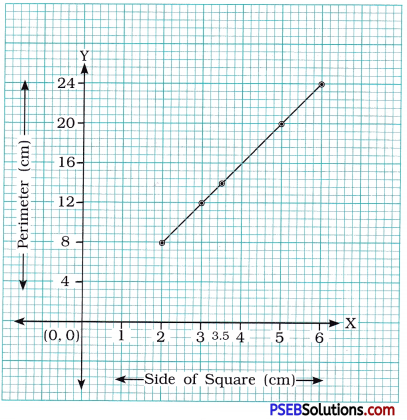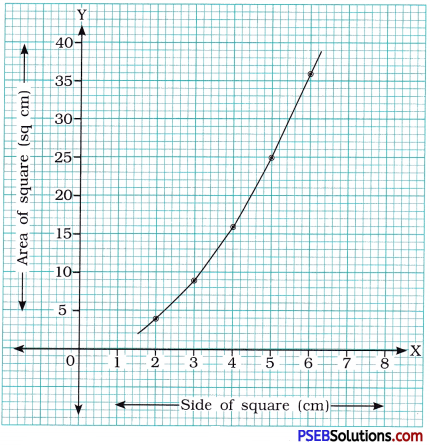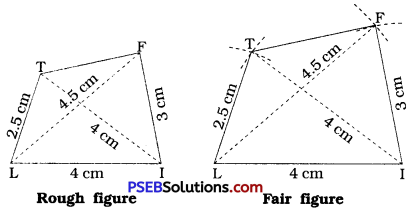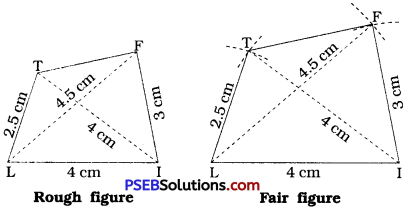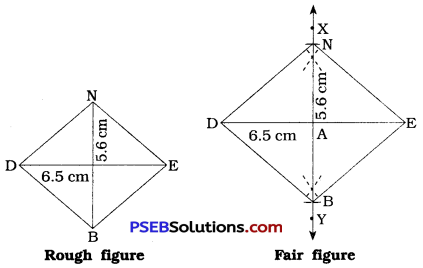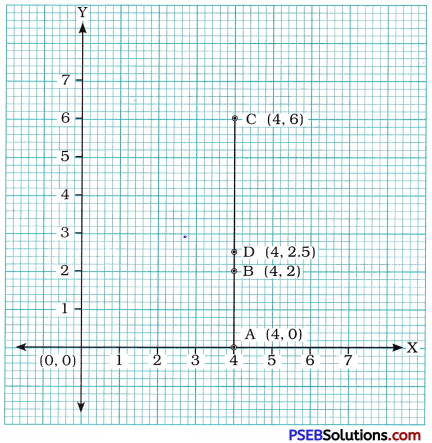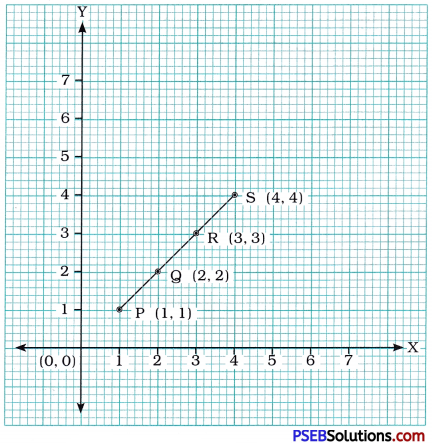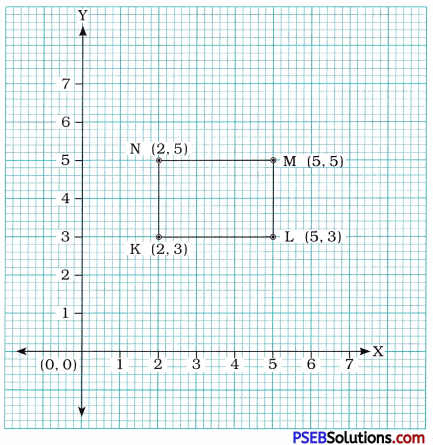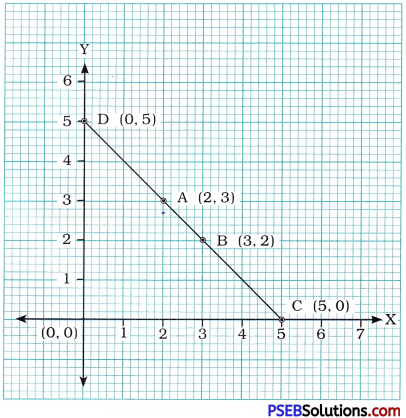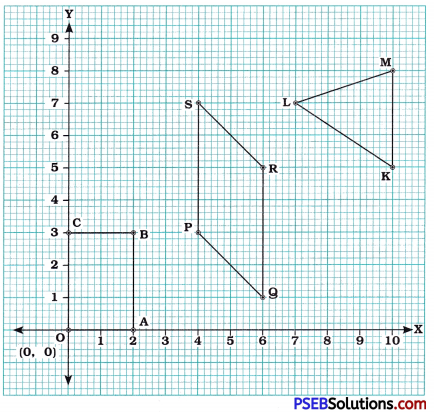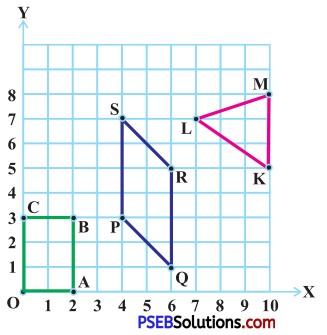Punjab State Board PSEB 8th Class English Book Solutions Poem 4 My Dear Soldiers Textbook Exercise Questions and Answers.
PSEB Solutions for Class 8 English Poem 4 My Dear Soldiers
Activity 1.
Look up the following words in a dictionary. You should seek the following information about the words and put them in your WORDS notebook.
1. Meaning of the word as used in the poem (adjective/noun/verb. etc.)
2. Pronunciation (The teacher may refer to the dictionary or a mobile phone for correct pronunciation.)
3. Spellings.
| defenders |
border |
deed |
windy |
scorching |
| sweltering |
treading |
marshes |
surveillance |
vibrate |
Vocabulary Expansion
Activity 2.
Write synonyms of the following words.
(a) very hot – Scorching
(b) protect – defend

Read the following pairs of words carefully.
1. great sons
2. windy season
3. snowy days
4. scorching sun
All the highlighted words are ‘adjectives’ and the partner words are ‘nouns.’ Sometimes adjectives can be changed to nouns. For example ‘beautiful is an adjective. The noun from the adjective ‘beautiful is ‘beauty’
| Sr. No. |
Adjective |
Noun |
| 1. |
strong |
wind |
| 2. |
active |
members |
| 3. |
rich |
people |
| 4. |
wise |
men |
| 5. |
loyal |
soldiers |
| 6. |
careful |
student |
| 7. |
kind |
person |
| 8. |
happy |
lad |
| 9. |
good |
friend |
| 10. |
faithful |
dog |
Learning to Read and Comprehend
Activity 4.
Read the stanza and answer the questions that follow.
A. Oh! Defenders of borders
You are great sons of my land
When we are all asleep in
You still hold on to your deed.
Windy season or snowy days
Or scorching sun’s sweltering rays
You are there guarding all the time awake
Treading the lonely expanses as Yogis.

(a) Name the poet of the poem ‘My Dear Soldiers’.
‘My Dear Soldiers’ कविता के लेखक का नाम बताएं
Answer:
The poet of this poem is A.P.J. Abdul Kalam.
(b) Who are being referred to as ‘Defenders of borders’ ?
‘सीमाओं का रक्षक’ किसे कहा जा रहा है
Answer:
Indian soldiers are being referred to Defenders of Borders’.
(c) How do these great sons serve their motherland ?
ये महान सपूत मातृभूमि की सेवा कैसे करते हैं ?
Answer:
They guard the borders of their motherland day and night.
(d) What kind of weather conditions do the soldiers have to face ?
सैनिक किस प्रकार की मौसमी दशाओं का सामना करते हैं ?
Answer:
They face windy and snowy weather.
B. Climbing the heights or striding the valleys
Defending the desert guarding the marshes
Surveillance in seas and by securing the air
Prime of your youth given to the nation!!
Wind chimes of my land vibrate your feat
We pray for you brave men!!
May the Lord bless you all!!
(a) Whom has the poem been addressed to ?
कविता किसे संबोधित की गई है ?
Answer:
The poem is addressed to the Indian soldiers.
(b) What do these great sons sacrifice for the nation ?
ये महान सपूत राष्ट्र के लिए क्या त्याग करते हैं ?
Answer:
They sacrifice their lives and their youth for the nation.
(c) What is the intention of the poet ?
कवि का इरादा क्या है?
Answer:
The poet wishes to tribute to our brave soldiers. He also wishes that they should enjoy God’s blessings.

(d) Explain: ‘Wind chimes of my land vibrate your feat’.
व्याख्या कीजिए : “मेरे देश की पावन की झंकार तुम्हारे कदमों में सुनाई देती है”
Answer:
It means that our soldiers march forward with rhythmical sound.
Learning Language
Formation of Adverbs
A large number of adverbs are formed by adding ‘-ly’ to certain adjectives.
1. Most of the adverbs formed this way are the Adverbs of Manner. For example :
| Sl.No |
Adjective |
Adverb |
| 1. |
strong |
strongly |
| 2. |
faithful |
faithfully |
| 3. |
sincere |
sincerely |
| 4. |
quick |
quickly |
| 5. |
slow |
slowly |
| 6. |
neat |
ready |
| 7. |
busy |
busily. |
| 8. |
happy |
happily |
| 9. |
true |
truly |
| 10. |
severe |
severely |
2. Some adverbs have the same form as the corresponding adjectives. For example :
| S. No |
Adjective |
Adverb |
| 1. |
Fie put in a lot of hard work. |
He worked hard. |
| 2. |
I want a little sugar. |
Please move a little. |
| 3. |
Fie has high aims. |
He aims high in life. |
| 4. |
I want an early reply. |
Please reply early. |

3. Some adverbs are formed by combining a noun and a qualifying adjective. For example : yesterday, otherwise, meanwhile, sometimes.
4. Some adverbs are formed by adding a noun to ‘a’, ‘be’ and ‘to’, etc. For example : today, abreast, ahead, besides, etc.
5. Some adverbs are formed by combining ‘à or ‘be’ and an adjective. For example : aloud, anew, behind, aloud, alone, etc.
6. Some adverbs are formed from participles. For example : wittingly, surprisingly, knowingly, etc.
7. Some adverbs are formed in the following ways. For example : 1… one
| 1. |
one |
once |
| 2. |
two |
twice |
| 3. |
three |
thrice |
| 4. |
four |
fourfold |
| 5. |
many |
manifold |
8. There are several adverbs which we used together having been joined together with
conjunctions to form adverbial phrases. For example :
(a) by and by (within a short period)
(b) again and again
(c) far and wide
(d) first and foremost
(e) to and fro
(f) off and on (occasionally) etc.
Activity 5.
Change the following adjectives to adverbs.
| S. No. |
Adjective |
Adverb |
| 1. |
bad |
badly |
| 2. |
angry |
angrily |
| 3. |
fast |
faddy |
| 4. |
bold |
boldly |
| 5. |
brisk |
briskly |
| 6. |
meek |
meekly |
| 7. |
nice |
nicely |
| 8. |
soft |
softly |
| 9. |
fair |
fairly |
| 10. |
clean |
cleanly |
Activity 6.
In the following sentences, same words are used both as an adjective and as an adverb. Underline the word and write whether it is used as an adjective or an adverb.
(a) You gave a beautiful, presentation. — ‘beautiful’ as an adjective
(b) Your work is beautifully presented. — ‘beautifully as an adverb
(c) I get a monthly paycheque. — ‘monthly’ as an adjective
(d) My company pays me monthly. — ‘monthly’ as an adverb
(e) She dressed elegantly. — ‘elegandy’ as an adverb
(f) She looks very elegant in suit.– ‘elegant’ as an adjective
(g) That boy is so loud. — ‘loud’ as an adjective
(h) That boy speaks so loudly. — ‘loudly as an adverb
(i) He is a gentle person. — ‘gently as an adjective
(j) He hugged me gently. — ‘gently’ as an adverb.

Activity 7.
You will tell your partner something that she/he doesn’t know about you. You may talk about one of the following topics.
- your pet
- yourself
- something you have bought
- a neighbour
- a place
While speaking. include two or three lies too. Take turns in speaking. The listener will listen carefully and note down in the notebook what she/he thinks is not true’ or ‘a lie’. When both of you have taken turns in speaking, you will tell your partner what you think was not true in his/her story.
The teacher must go to each bench to ensure that students are using English. Alternatively, the teacher can give two stories with lies which they can read and the partner can point out the lies.
My Pet
I have a pet. It is dog. It is small. But it is very greedy. It can eat one kilo of rice and twelve eggs for a single meal. It eats its rice with a spoon. When I come from outside, it jumps out me and talks to me in English. It scolds me if I reach home late. My father, is very happy with my dog because it helps him in cleaning the house.
Or
A Visit to Simla
I went to Simla for a vacation. It is a very big city. It is a very warm place. I went there on a shop. I did a lot of shopping there. I bought juices from there. I also bought an aeroplane from there and came home on that aeroplane. I keep the aeroplane in my garage and go to my school on my plane everyday.
Learning to Speak (Pairwork)
There are birds of prey that live on high mountains and trees. They have very good eye sight and can see things on the ground while flying in the sky. If they see something that they can eat, they dive like a thunderbolt to catch their prey.

Activity 8.
Think of a wild animal or a bird that you like. Write its different qualities in the mind map given below. Take 2-3 minutes to do this work. You can use the following hints.
(a) kind of bird or animal
(b) its appearance and size
(c) its habitat
(d) its eating habits – herbivorous/carnivorous
(e) some special quality
(f) usefulness of the animal/bird
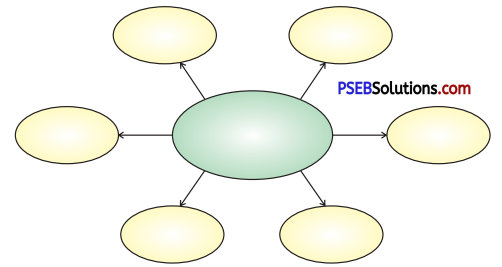
Now speak for two minutes about the animal or the bird you have made notes on. You can refer to your notes while speaking.
Answer:
Elephant is my favourite animal. It lives in dense forests, mostly in dry-wet areas. It is a royal animal that walks gracefully. It has big body greyish to brown in colour. It is a herbivorous. Sugarcane is its favourite food. It has a trunk and two long teeth. It carries heavy logs of wood. It gives rides too.
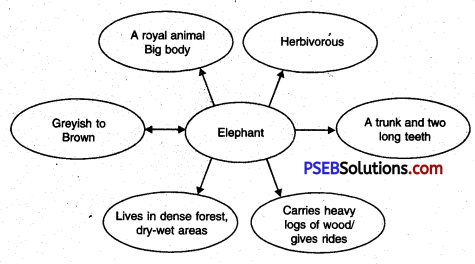
Learning to Write
Letter Writing
Letter writing is an important skill. We need to write letters in our daily life. It may be stated that these days people write emails more than letters. However, the art of writing letters and emails is the same though the format is different. Let us look at a complete letter written below:
Write a letter to your younger brother congratulating him on his brilliant success.
A 204 Rishi Apartments
Sector 70
SAS Nagar
June 10, 20…
Dear Harnaaz
Heartiest congratulations on achieving brilliant success in your board examination! I just came to know about it and I am very happy. I hope you are also extremely happy to receive the news of your result. You have stood first in your stater It is the result of your hard work. I am really proud of you. Your parents must also be very happy. If you continue to work hard like this, you will be a successful person in life.
I wish you a lot of success in your future too.
Yours sincerely
Mankeerat.
Activity 9
Now, using the format of letter writing given earlier and the notes written by you in the mind map above, write a letter to your friend telling him/her all about the animal/ bird you wrote about. At the end of the letter, you must write to your friend about why human beings should try to protect birds and animals from getting hunted by poachers.
Answer:
C-203, Sardar Patel Marg
Sector–22
Chandigarh
21 May, 20…..
Dear Divyadeep
India is a land of bio-diversity (जैव – विविधता) We have many kinds of birds and animals wild and domestic. They have different colours, sizes and different food habits. They live in different climatic conditions (जलवायु दशाएं). They are the beauty of our planet. Elephant is a royal animal. He has kingly grace. Bengal Tiger is another wild animal worth mentioning. Lion is the king of forest. Killing of these animals for food and profit is banned. But it is a pity that poachers hunt them for money. They don’t spare even innocent birds like peacock. It must be stopped otherwise our earth will become a poor place to live in.
Yours Sincerely
Jasjeet.
Word Meanings
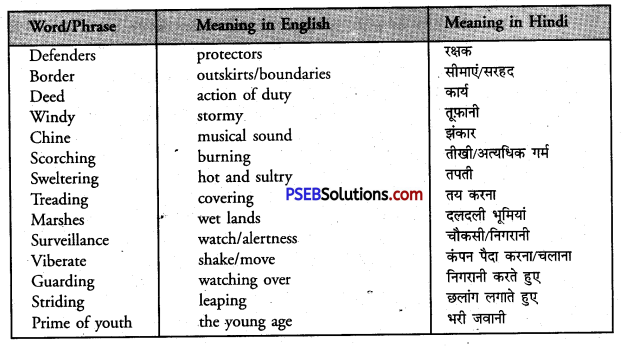

My Dear Soldiers Poem Summary in English
My Dear Soldiers Summary in English
It is a patriotic poem by A.P.J. Abdul Kalam. It is dedicated to the Indian soldiers. They are the great sons of India. Sun or shine they do their duty. They don’t care for hot sun rays or chilly winds. They are awake day and night guarding borders, the sea, the air and marshes.
Our soldiers are true patriots and selfless soldiers. They sacrifice their all for the sake of the country. They die for the sake of their motherland in the prime of their youth. They are worthy of our praise, respect and god’s blessing. Every Indian prays for the glory of our brave soldiers.
My Dear Soldiers Summary in Hindi
यह A.P.J. Abdul Kalam द्वारा लिखी गई देशभक्ति की एक कविता है। यह भारतीय सैनिकों को समर्पित है। वे भारत के महान् सपूत हैं। वे हर मौसम में अपना कर्तव्य निभाते हैं। वे सूर्य की गर्म किरणों या शीतल हवाओं की परवाह नहीं करते। वे हमारी सीमाओं-सागरों, हवाई मार्गों तथा दलदली भूमियों-की रक्षा करते हुए दिन-रात जागते रहते हैं। हमारे सैनिक सच्चे देशभक्त और नि:स्वार्थ सिपाही हैं। वे देश के लिए अपना सब कुछ बलिदान कर देते हैं। वे भरी जवानी में देश के लिए अपने प्राण दे देते हैं। वे हमारी प्रशंसा, हमारे सम्मान और परमात्मा के आशीर्वाद के पात्र हैं। हर भारतीय भारतीय सैनिकों के गौरव के लिए प्रार्थना करता है।
Central Idea of The Poem
This poem sings the glory of our soldiers. They are true patriots who sacrifice their all for the sake of their country. They guard our boundaries day and night. Sun or shine they are alert. Let us pray for their honour and glory.
![]()
![]()
![]()
